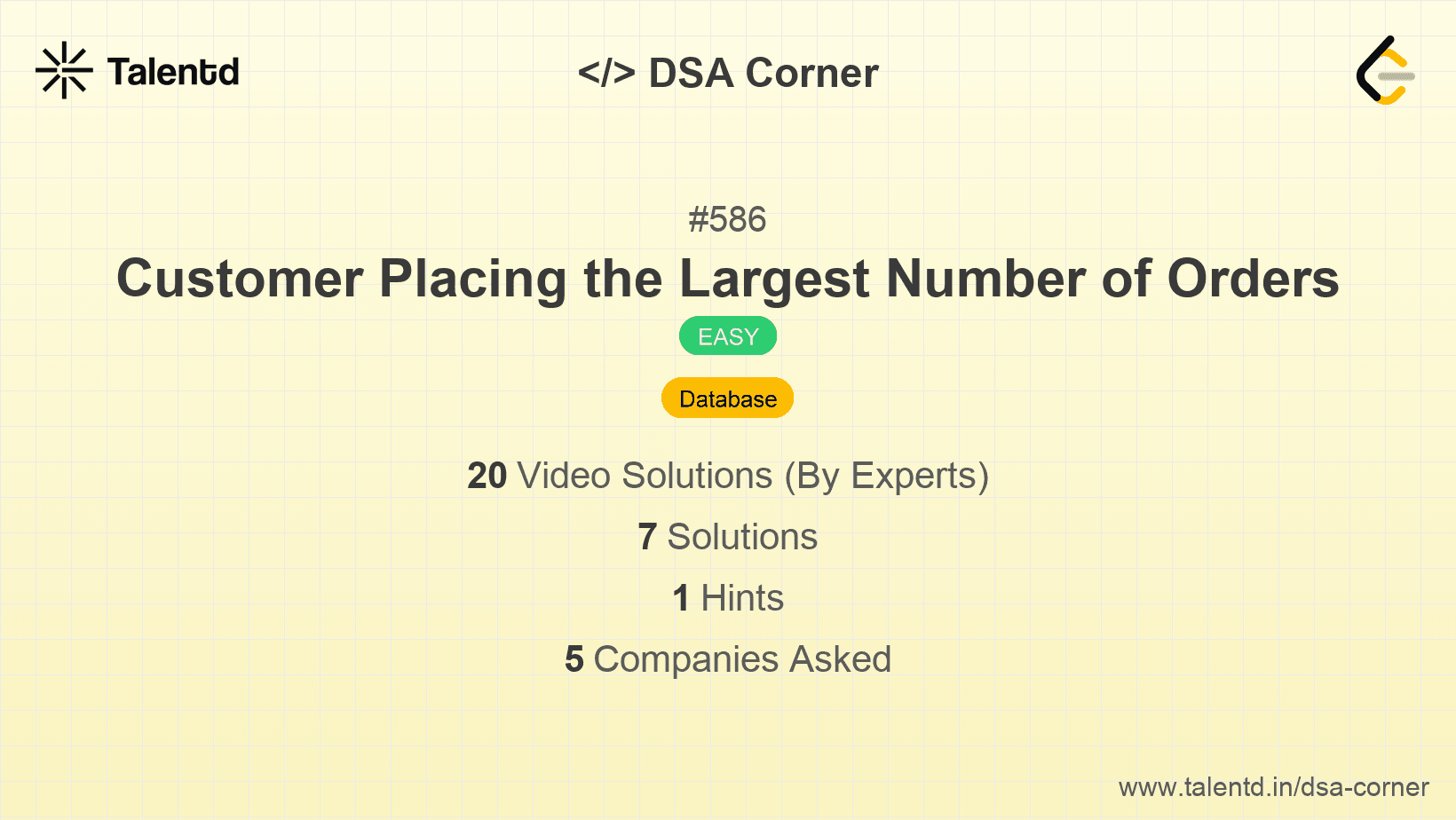
Sponsored
This approach leverages the SQL capabilities of grouping and aggregation to solve the problem efficiently.
First, we perform a GROUP BY operation on the customer_number to count the number of orders per customer. Then, we use ORDER BY in descending order and LIMIT 1 to retrieve only the customer with the maximum count of orders.
Time Complexity: O(n), where n is the number of orders.
Space Complexity: O(1), as we are not using any additional space outside of the database's space.
1#include <stdio.h>
2#include <stdlib.h>
3#include <sqlite3.h>
4
5/* Function to get the customer with the largest number of orders */
6void getLargestOrderCustomer(sqlite3 *db) {
7 sqlite3_stmt *stmt;
8 const char *sql = "SELECT customer_number FROM Orders GROUP BY customer_number ORDER BY COUNT(order_number) DESC LIMIT 1;";
9
10 if (sqlite3_prepare_v2(db, sql, -1, &stmt, 0) == SQLITE_OK) {
11 if (sqlite3_step(stmt) == SQLITE_ROW) {
12 int customer_number = sqlite3_column_int(stmt, 0);
13 printf("Customer Number: %d\n", customer_number);
14 }
15 sqlite3_finalize(stmt);
16 }
17}
18
19int main() {
20 sqlite3 *db;
21 sqlite3_open(":memory:", &db);
22 // Assume table creation and data insertion is done here.
23 getLargestOrderCustomer(db);
24 sqlite3_close(db);
25 return 0;
26}This C code uses sqlite3 to execute a SQL query to find the customer with the largest number of orders. It prepares a SQL statement, executes it, and iterates through the result to print the customer number with the most orders.
This approach involves manually iterating over the orders and using a data structure like a hash map (or dictionary) to count the number of orders per customer. Once counted, we can iterate over this collection to find the customer with the maximum orders.
Time Complexity: O(n), where n is the number of orders.
Space Complexity: O(m), where m is the number of unique customers.
1def find_customer_with_most_orders(orders):
2 order_count = {}
3 # Count orders per customer
This Python code manually counts customer orders using a dictionary to map customer numbers to their respective order counts. Finally, it identifies the customer with the maximum count.